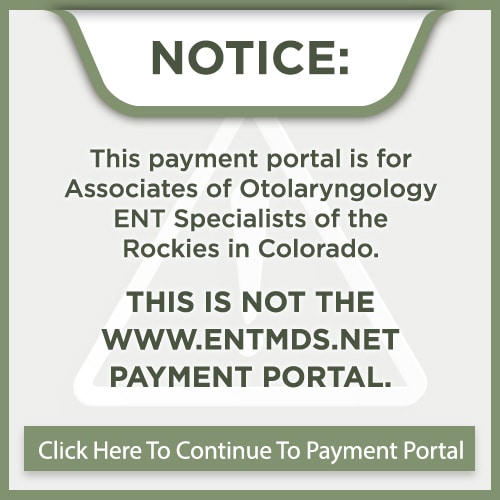The glands in your nose and throat continually produce mucus (one to two quarts a day). The mucus moistens and cleans the nasal membranes, humidifies air, traps and clears inhaled foreign matter, and fights infection. The mucus can be rich in immune proteins and debris that have been brought out of your sinus cavities. Although mucus normally is swallowed unconsciously, the feeling that it is accumulating in the throat or dripping from the back of your nose is called post-nasal drip. This feeling can be caused by excessive or thick secretions or by throat muscle and swallowing disorders.
What Causes Post-Nasal Drip?
Post-nasal drip is described as the sensation of mucus accumulation in the back of the throat or dripping from the nasal passages. Increased thin clear secretions can be due to colds and flu, allergies, cold temperatures, bright lights, certain foods/spices, pregnancy, and other hormonal changes. Various drugs (including birth control pills and high blood pressure medications) and structural abnormalities can also produce increased secretions.
Structural Abnormalities and Serious Causes
These abnormalities might include a deviated or irregular nasal septum (the cartilage and bone dividing wall that separates the two nostrils). The most concerning abnormal thin secretion emanating from the nose is called cerebrospinal fluid rhinorrhea. This occurs when the cushioning fluid surrounding the brain leaks through a defect in the bone of the roof of the nose or a nearby structure that drips into the nose after a fracture, nasal or facial surgery, or, rarely, without an identifiable cause. CSF rhinorrhea is usually a constant, clear nasal dripping and can often be salty and bitter to the taste. It may be accompanied by positional headaches or subtle fluctuations in mental state.
Thick Secretions and Infections
Increased thick secretions in the winter often result from too little moisture in heated buildings and homes. They can also result from sinus or nose infections and some allergies, especially to certain foods such as dairy products. If thin secretions become thick and green or yellow, a bacterial sinus infection may be developing. It is important to realize that not all colored nasal secretions correlate with a nasal infection, however. In children, thick secretions from one side of the nose can mean that something is stuck in the nose (such as a bean, wadded paper, or a piece of toy, etc.).
Nonallergic Rhinitis
Vasomotor Rhinitis describes a nonallergic “hyperirritable nose” that feels congested, blocked, or wet. It may be aggravated by cold weather exposure or exercise. A similar and related condition, gustatory rhinitis, occurs when a patient is eating and is particularly aggravated by spicy foods. Certain hot foods may stimulate the trigeminal nerve endings in the mouth and throat, which then triggers a response in the nasal passages, leading to excess mucus production.
Symptoms of Post-Nasal Drip
Postnasal drip may be associated with a variety of symptoms, including:
- Irritated or sore throat
- Frequent throat clearing
- Frequent swallowing
- A feeling of mucus draining in your throat
- Cough that occurs more at night
- Bad breath
- Nausea or vomiting due to excess mucus draining into the stomach
Treatment For Post-Nasal Drip
A correct diagnosis requires a detailed ear, nose, and throat exam and possible laboratory, endoscopic, and x-ray studies.
Ultimately, each treatment is different depending on the cause.
Deviated Septum
Those with a deviated septum may benefit from a procedure known as septoplasty. This surgery will straighten the septum to provide better airflow and may permanently treat postnatal drip. The best way to determine if this option is right for you is through a consultation.
Bacterial Infections
Bacterial infection, when present, is treated with antibiotics. These drugs may provide only temporary relief. In cases of chronic sinusitis, surgery to open the blocked sinuses may be required. Sometimes, other types of nasal surgery will be recommended for persistent and stubborn nasal drainage, including turbinate or septum surgery.
Allergies
Allergy is managed by avoiding the cause if possible. Antihistamines and decongestants, steroid nasal sprays, and other forms of steroids may offer relief. Immunotherapy (allergy shots) also may be helpful. However, some older, sedating antihistamines may dry and thicken post-nasal secretions even more; newer nonsedating antihistamines do not have this effect. Decongestants can aggravate high blood pressure, heart disease, and thyroid disease. Steroid sprays may generally be used safely under medical supervision.
Chronic Acid Reflux
For individuals living with postnatal drip due to gastroesophageal reflux disease (GERD), treatment may include avoiding foods or drinks a few hours before bed, losing excess weight, eliminating caffeine and alcohol, and taking antacids or acid blockers.
General Measures for Secretions
General measures for thinning secretions so they can pass more easily through the nasal passages may be recommended when it is not possible to determine whether an existing structural abnormality is causing the post-nasal drip or if some other condition is to blame.
Many people, especially older persons, need more fluids to thin secretions. Drinking more water, eliminating caffeine, and avoiding diuretics (fluid pills) will help. Mucous-thinning agents such as guaifenesin (Mucinex) may also thin secretions.
Nasal irrigations, such as saline nasal sprays may alleviate thickened secretions and postnasal drip symptoms. These can be performed two to four times a day with as simple a device as possible to prevent contamination of the irrigation system itself. Several devices for doing this can be found at your local pharmacy or supermarket. A clear plastic syringe will also work very well. Warm water with baking soda and non-iodized salt (1/2 to 1 tsp. to the pint for each). Finally, the use of simple saline (salt) nonprescription nasal sprays (e.g., Ocean, NeilMed Sinus Rinse) to moisten the nose is often very beneficial.
Schedule a Consultation Today
If you’re experiencing persistent post-nasal drip, nasal congestion, or other sinus-related concerns, the expert team at AOO | ENT Specialists of the Rockies is here to help. Our board-certified ENT specialists offer personalized, advanced care to diagnose the root cause of your symptoms and create an effective treatment plan. Don’t let discomfort interfere with your daily life! Contact us today to schedule a consultation and take the first step toward breathing easier.







